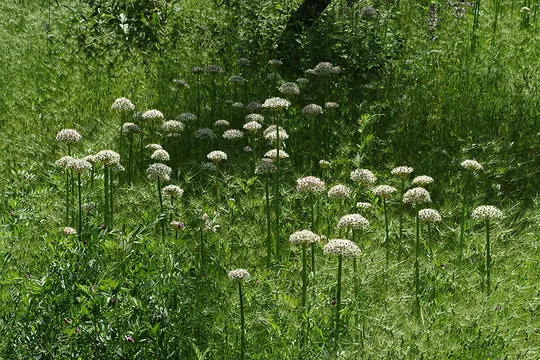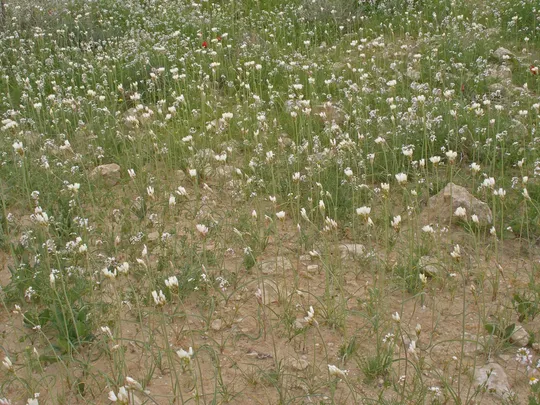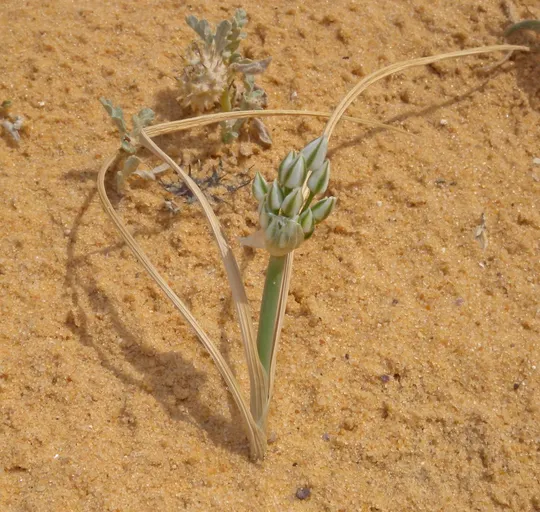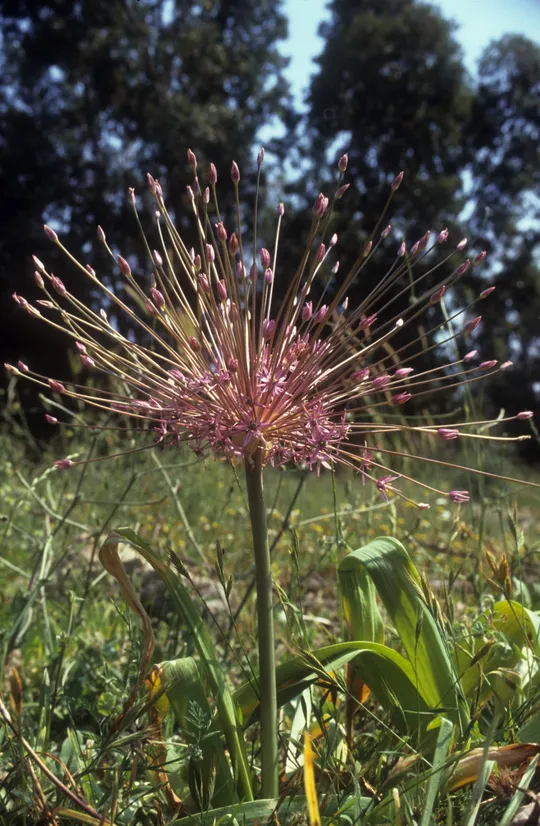Allium meronense
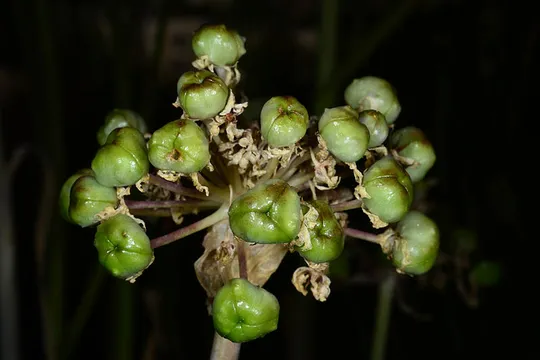
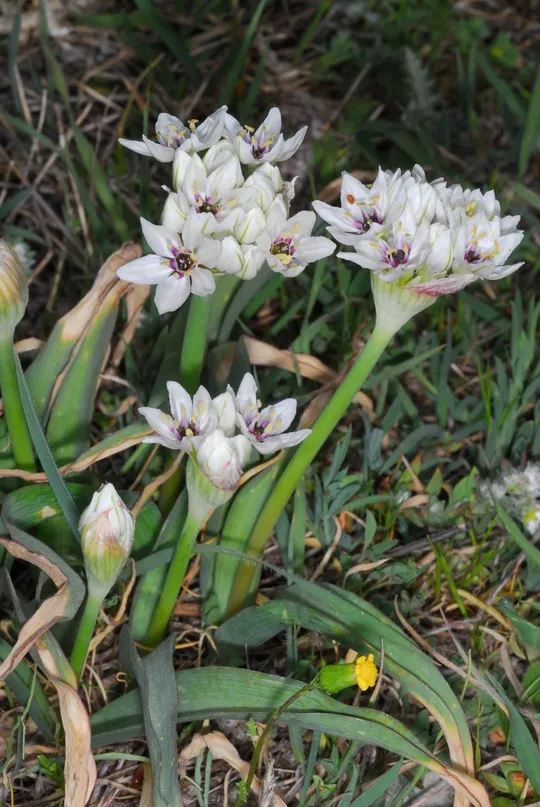
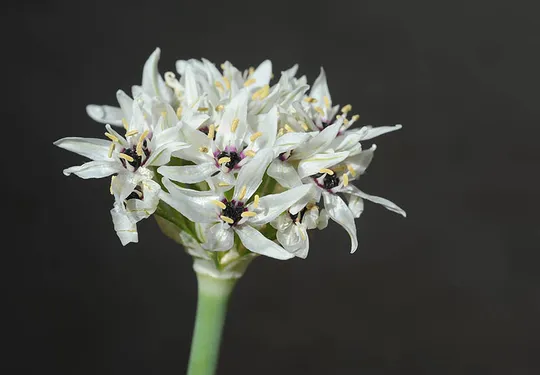
Allium asclepiadeum grows on 23 sites in the Upper Galilee, in the Mount
Meron block and eastwards in the area of Mount Cana'an, Kerem Ben Zimra, Alma,
Rehaniya and Malkiya.
Rocky heavy
soils; herbaceous scrubland (with Dactylis glomerata) and Quercus
calliprinos woodland margins at altitudes of 700-1100 m.
The
species was originally identified as Allium asclepiadeum (a species described from southern Turkey), but
was finally included in A. basalticum (Flora Palaestina, Coleman,
1985). The A. basalticum group and the species close to it in the eastern
Mediterranean are very variable and Coleman included some under one species – A.
basalticum – a Mediterranean plant found mainly in deep soils, in traditional agricultural areas,
along the Mediterranean Basin from Spain to Israel. Recent molecular research
on the subgenus Melanocrommyum (Fritsch et al., 2010) changes our perception of the relations between the
species and indicates that A. asclepiadeum is not close to A. basalticum
(sensu stricto), but is extremely close to A. meronense
(in Israel) and to A. rothii. This is apparently
a series of three vicarious species that replace each other along the length of
Israel: A. meronense in the Mediterranean
region, A. israeliticum in the transition
zone and A. rothii in the desert. Further
analysis of the remaining A. basalticum populations in Israel
is needed – the populations
of the Golan Heights and eastern Galilee on basaltic soil, in which the plants
are tall and have a short corolla and the Nahal Yagur populations in the Carmel
that are characterized by pink flowers, similar to almost all the A.
basalticum
populations in the Mediterranean Basin. The Carmel population was formerly
identified as A. dumetorum, but it was
also included in A. basalticum (Coleman, 1985). In the future A.
basalticum may
possibly be formally divided into three species in Israel: A.
meronense, A. dumetorum
(sensu stricto – only in the Carmel) and A.
basalticum in
basaltic areas.
·
Allium asclepiadeum
sensu
stricto and not A. basalticum (which is a broader species)
is limited in Israel to a single region – the Upper Galilee, particularly its
eastern part. Most of the collections and records are from the 1980s and
onwards and there is no clear documentation of change trends compared to
earlier time periods.
·
The A. asclepiadeum populations number from tens to hundreds of plants.
·
Closing woodlands
and the disappearance of scrubland and herbaceous vegetation clearings may
cause local extinctions.
·
A. asclepiadeum
is protected in Israel in the Mount Meron Nature Reserve.
The species
is endemic to Israel and its local threat status is equivalent to its global
one
The Galilee populations of Allium asclepiadeum should be subject to long-term
monitoring, to examine, in the Meron area, the extent to which the spread of
woody vegetation at the expense of scrubland and herbaceous vegetation affects the
individual plants and their population size. Thinning operations should be
considered if it becomes clear that woodland closure has a negative impact on
the species.
Allium asclepiadeum is apparently endemic to the Galilee.
Allium
asclepiadeum is a rare and endemic geophyte growing only in the
Upper Galilee. Its systematic status requires further investigation and it is
possible that it should be included in A.
basalticum which is widely distributed in the Mediterranean Basin. This may change
its status as a "red" plant.
קולמן, פ. 1985. הסוג שום בישראל. רתם 15: 81.
Fritsch, R.M., Blatner, F.R. & Guruschidze, M. 2010. New Classification of Allium L. subgen. Melanocrommyum (Webb. & Berthel.) Rouy (Alliaceae) Based on Molecular and Morphological Characters. Phyton 29: 145-320.
Fragman-Sapir, O. and F.M. Fritsch. 2011. New Species of Allium Sect. Melanocrumyum from the eastern Mediterranean. Herbertia 65 : 31-50.
Current Occupancy Map
| 1000 squre meter pixel | 5000 squre meter pixel | 10000 squre meter pixel | |
|---|---|---|---|
| number of observations | 0 | 0 | 0 |
| in total pixels | 0 | 0 | 0 |
| Family | Liliaceae |
| Classification | On the endangered species list |
| Ecosystem | Mediterranean |
| Chorotype | Eastern Mediterranean – Western Irano-Turanian |
| Conservation Site | Mount Meron near the Summit Trail, Mount Admon |
| Rarity |
1
2
6
|
|---|---|
| Vulnerability |
0
0
4
|
| Attractiveness |
0
1
4
|
| Endemism |
0
3
4
|
| Red number |
1
3.7
10
|
| Peripherality | N |
| IUCN category | DD EW EX LC CR EN VU NT |
| Threat Definition according to the red book | Vulnerable |
 Based on:
Based on:
